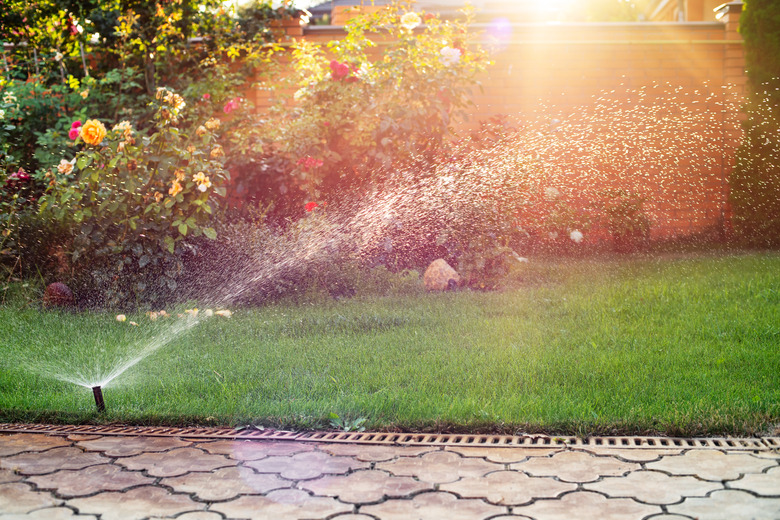Will Clorox Kill Grass?
We may receive a commission on purchases made from links.
Clorox bleach has been a popular cleaning and disinfecting product for many years, and if you've ever spilled some on your clothes, you realize the product's strength. If you own a pool, you may wonder whether pouring diluted bleach on grass will end up killing your lawn. Fortunately, because the bleach has been diluted, your turfgrass should make it through the dump without any problems.
Characteristics of Clorox Bleach
Characteristics of Clorox Bleach
Regular Clorox bleach has been used since the 1920s as a disinfectant and is regularly used in homes, hospitals, and public water systems. The company notes that since this time, the product's basic components haven't changed much. Sodium hypochlorite is the active ingredient in regular Clorox and is derived from the same ingredient as table salt: sodium chloride. A container of Clorox regular bleach contains 6 percent sodium hypochlorite as well as small amounts of sodium carbonate and sodium hydroxide. The rest of the solution is made up of water.
The chlorine in bleach breaks down quickly with up to 98 percent reverting to salt and water soon after you use the product to disinfect areas. The remainder of the bleach that doesn't break down gets treated by septic and sewer systems.
Effects of Clorox on Plants
Effects of Clorox on Plants
Plants, including turfgrass, do require a small quantity of chlorine for healthy growth, but those quantities are very small and are usually contained in the soil. Therefore, seeing a chlorine deficiency is unusual, and plants rarely require an additional application. Turfgrass can handle higher amounts of chlorine than other plants, like trees, ornamentals, and shrubs, which can be severely damaged by the micronutrient.
Plants suffering chlorine toxicity have scorched foliage and smaller leaves than normal. The leaves can appear bleached and can eventually yellow and drop from the plant. Consequently, use caution when emptying cleaning wastewater containing Clorox into your garden because the higher amounts of chlorine and other chemicals it contains can damage your plants.
Chlorine in Pool Water
Chlorine in Pool Water
It's natural to worry about the effects of emptying pool water on your turfgrass, too, and you may wonder if the grass will die. Properly chlorinated pool water is of little concern because the amount of chlorine the water contains is usually 1 to 4 ppm (parts per million), and since turfgrass isn't affected by smaller amounts of chlorine, your grass is generally safe. Even chlorinated tap water is safe to use on your grass and other plants because it typically contains much less chlorine than pool water. However, your turfgrass isn't totally immune to chlorine damage, as extreme amounts of the substance can damage and kill it.
Chlorine in Rinse Water
Chlorine in Rinse Water
Clorox makes a concentrated bleach formula for outdoor use, and the company states the product won't damage your turfgrass or other plants. However, the company notes that if the product splashes on your vegetation, you should rinse it off with tap water. If you're wondering whether the chlorine in tap water used to water your grass and plants will negatively affect the soil, note that the amount of chlorine in drinking water is so small it might affect beneficial microorganisms in the top half inch of soil, but after two days, they are back at normal levels. Chlorine binds with the surfaces of soil particles, which immobilizes it and prevents it from killing microorganisms in the soil. It takes a higher level of chlorine, such as 65 ppm, to kill microorganisms found at 6 inches or deeper in the soil.
